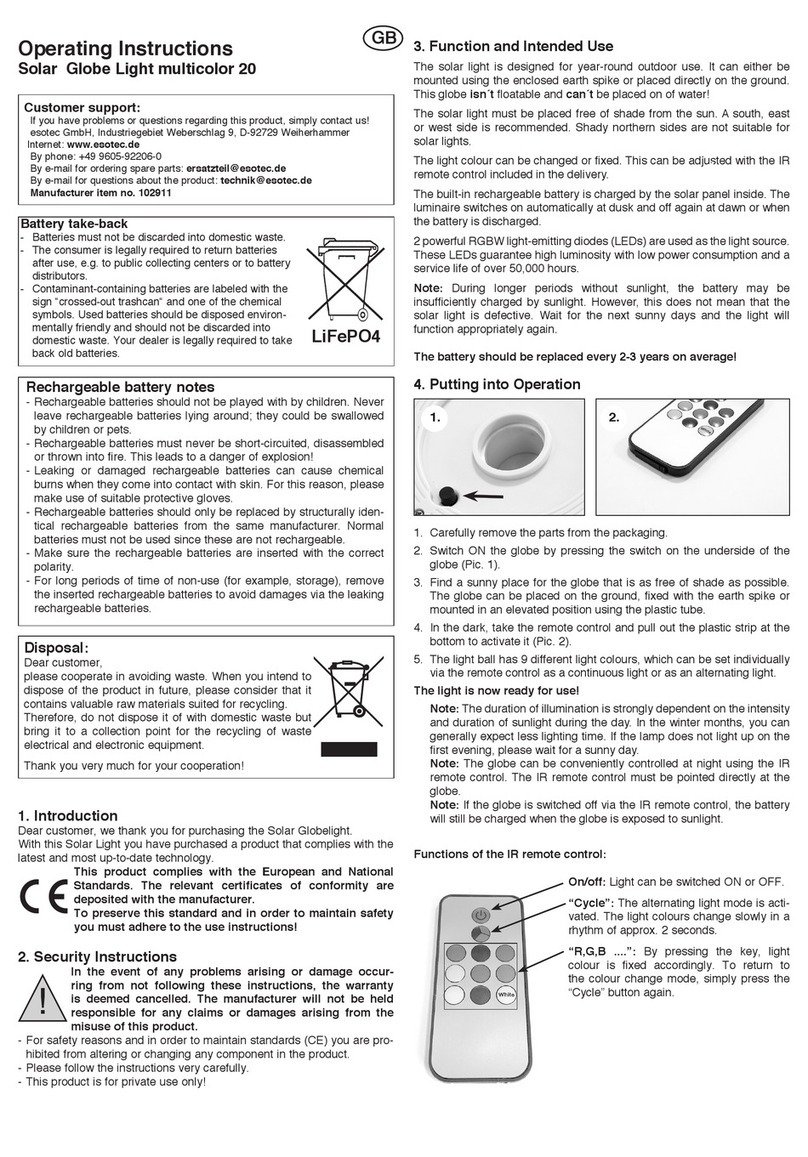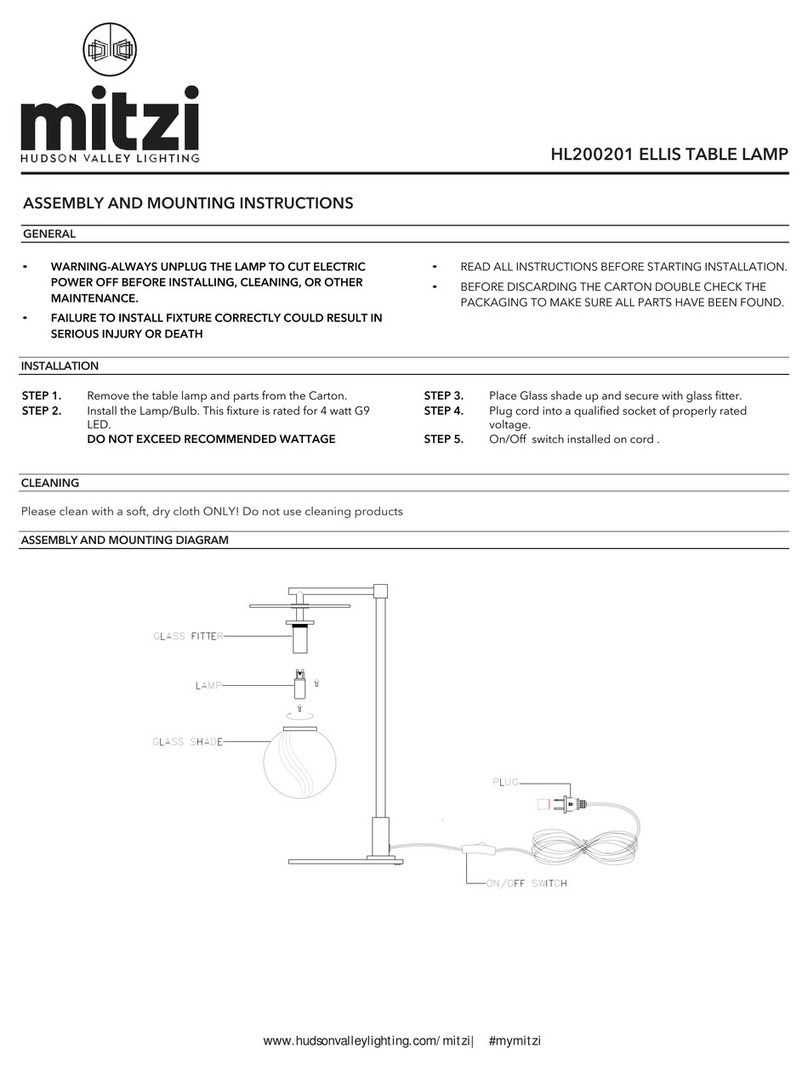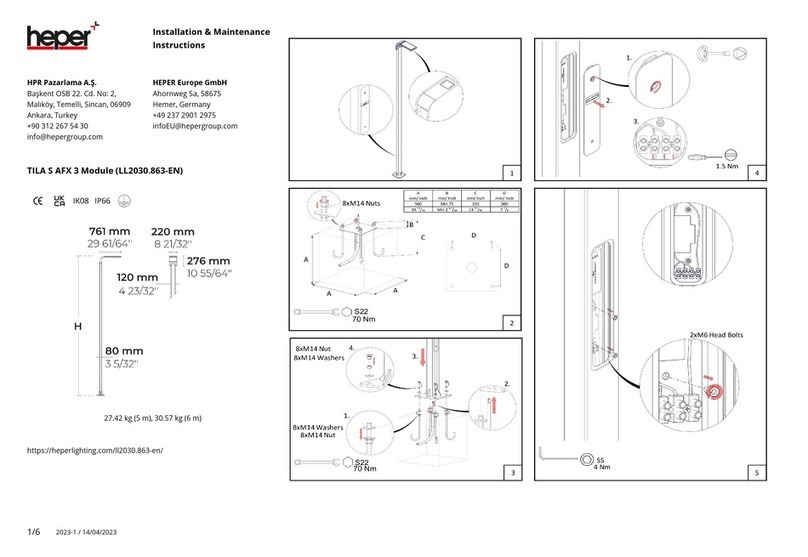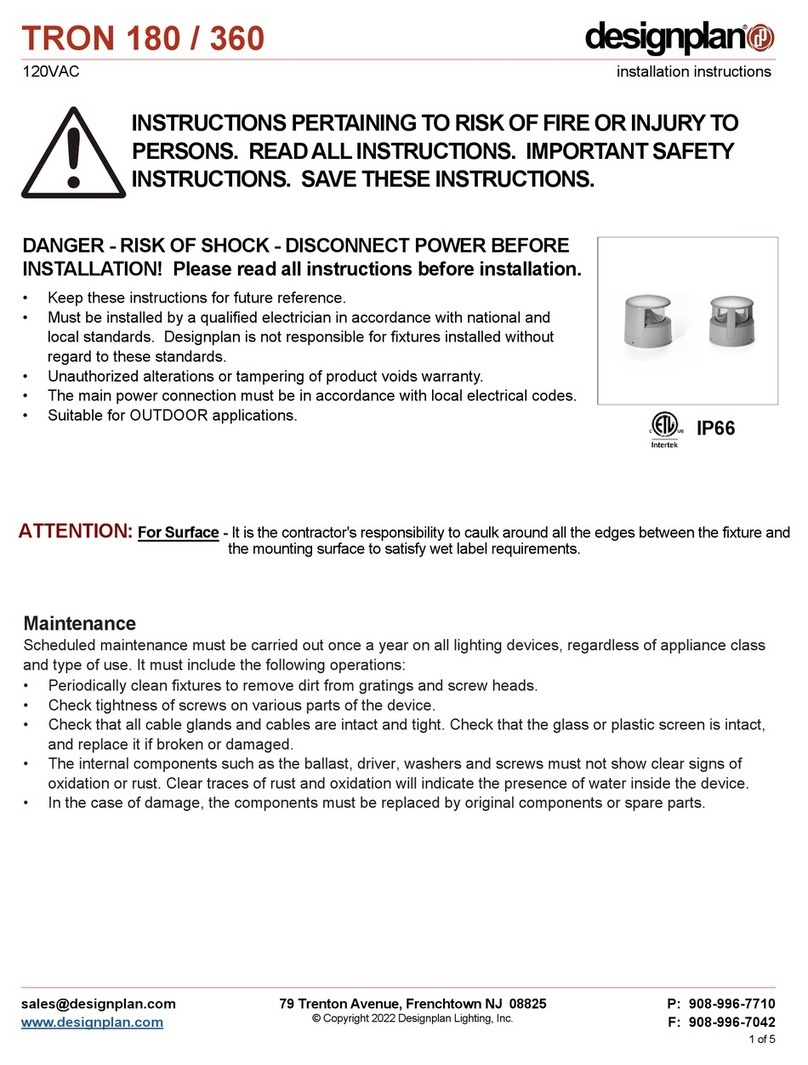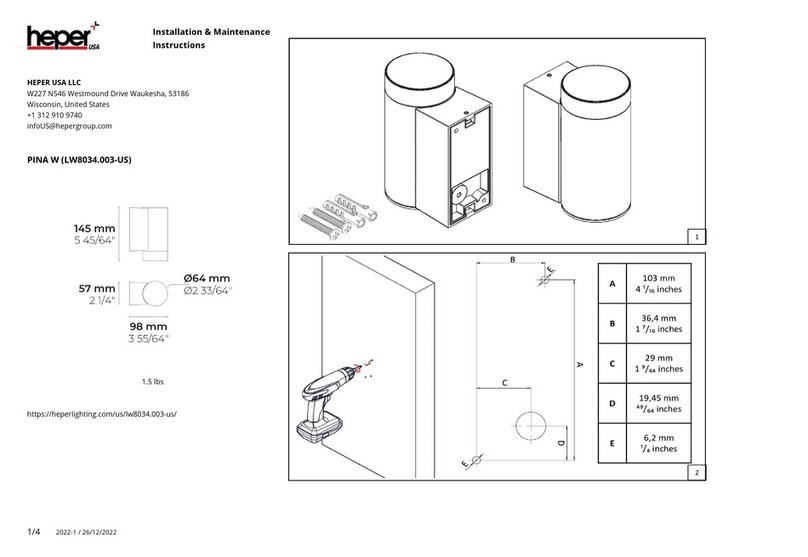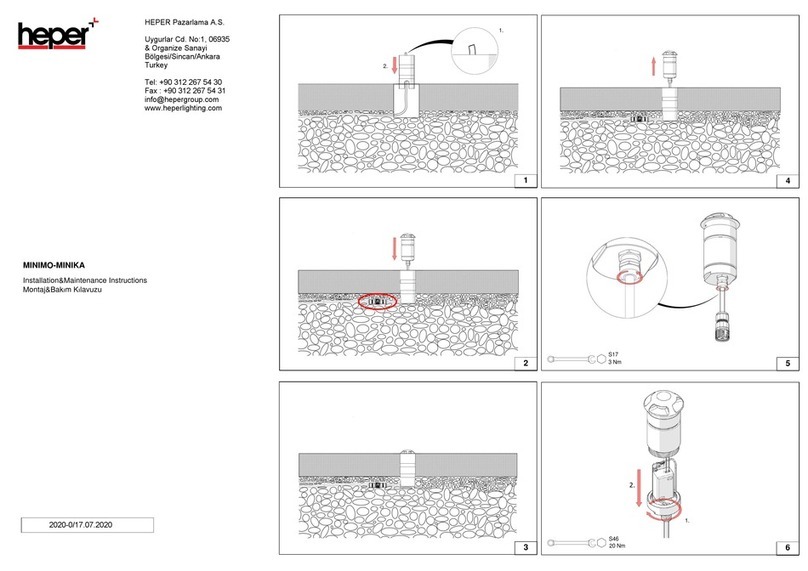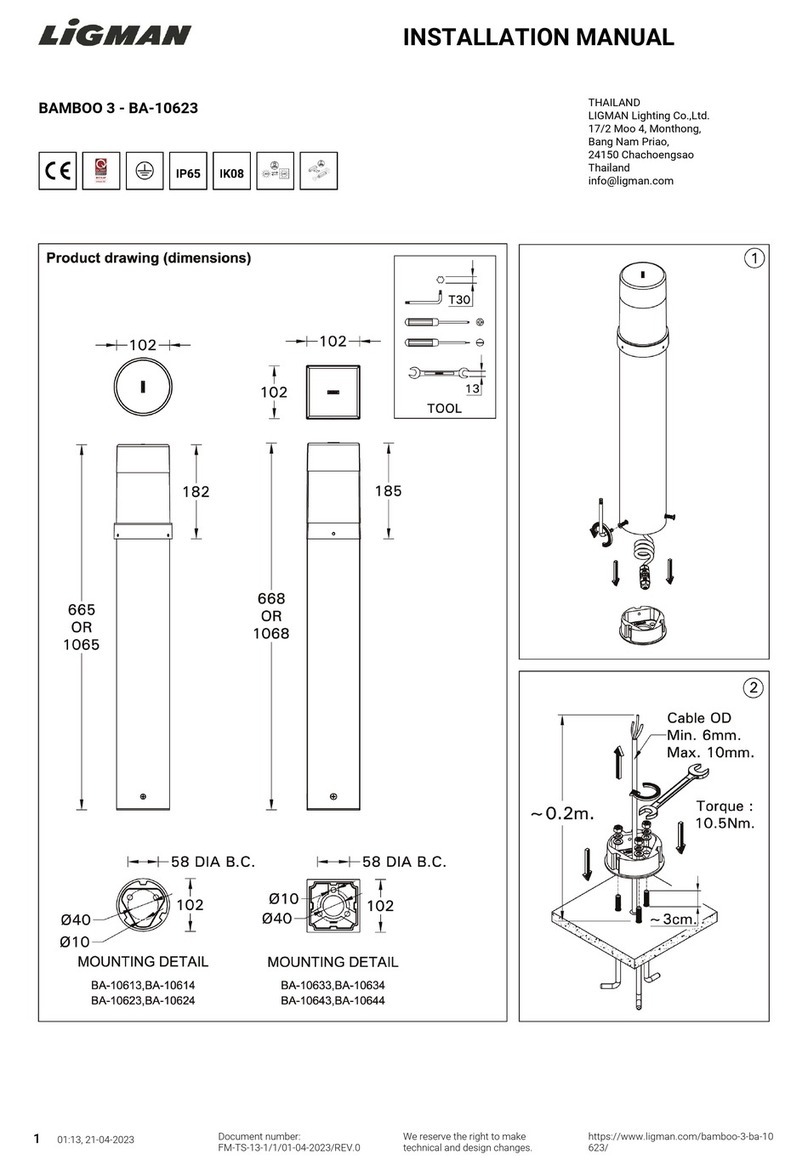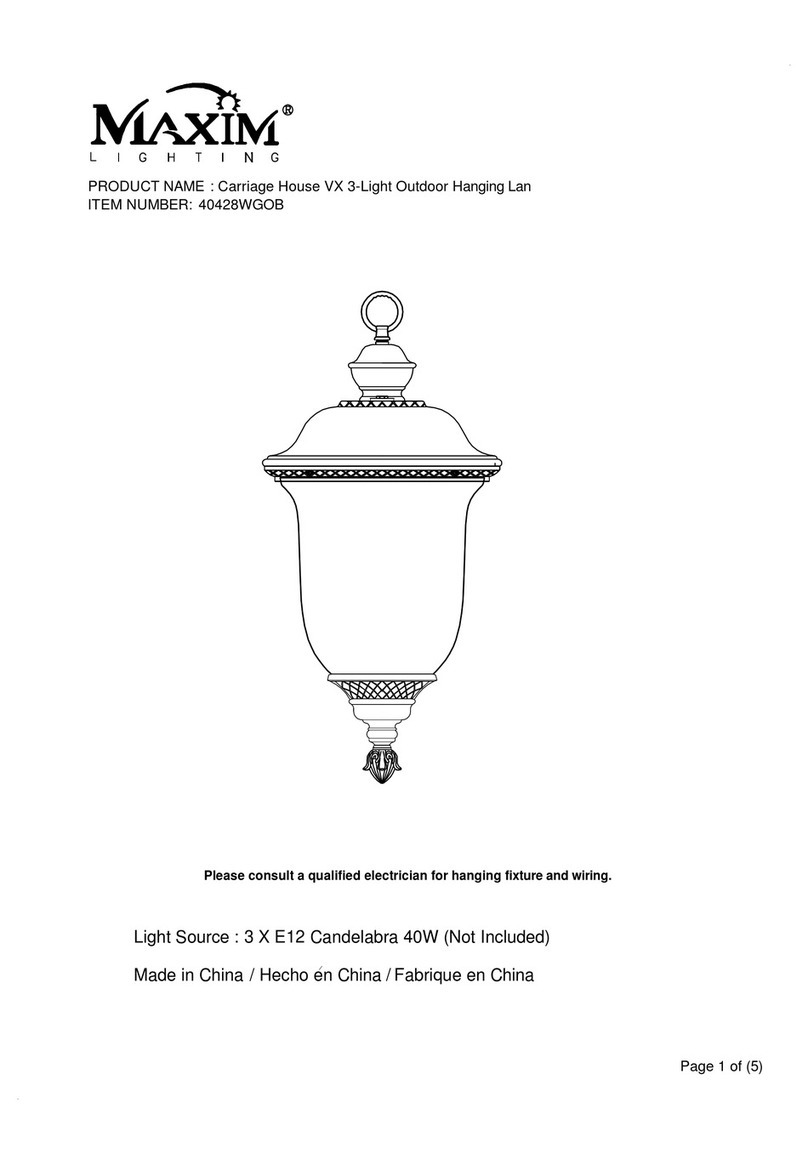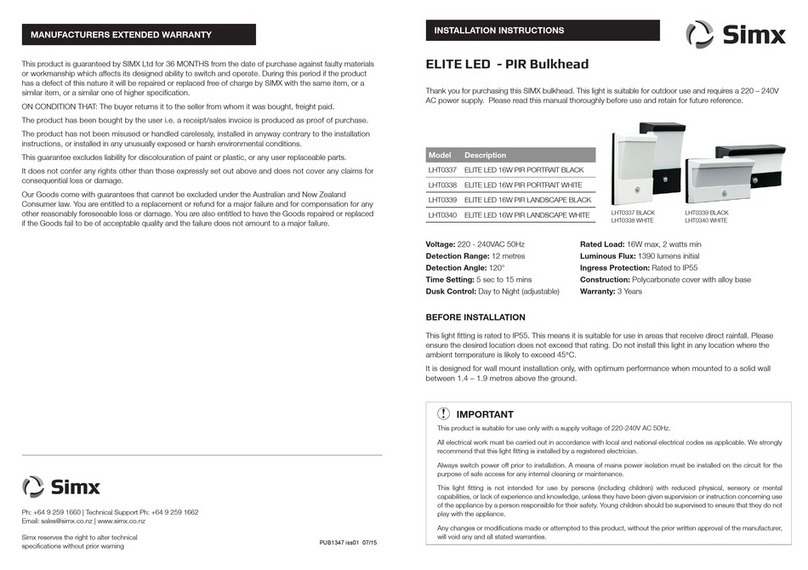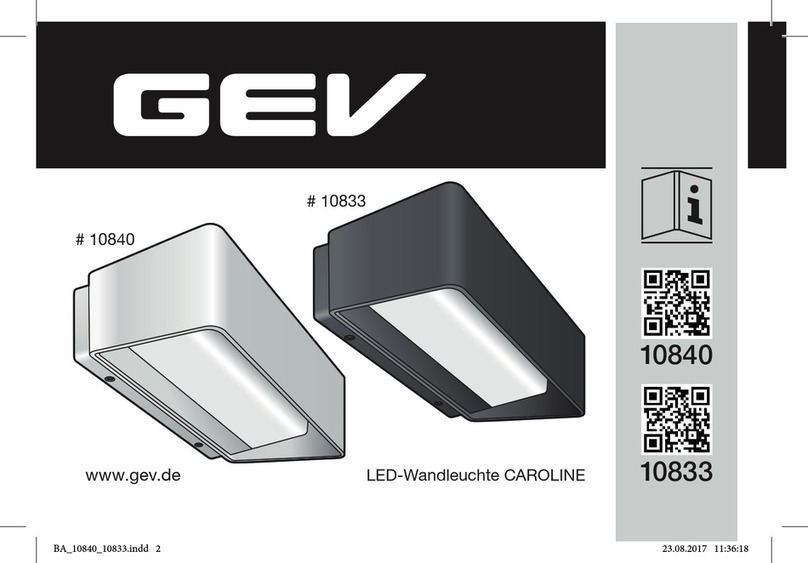
Technical Support: 888 / 387-2212 ©2016 Acuity Brands Lighting, Inc. Rev 1/16
1300 S Wolf Road, Des Plaines, Illinois, 60017 / 219 Shoemaker Street, Kitchener, Ontario, N2E 3B3 / 220 Chrysler Drive, Brampton, Ontario L6S 6B6
Guide de dépannage
Voyez d’abord si le luminaire a subi des dommages physiques. S’il semble en bon état, vous devriez procéder comme suit.
Avertissement — Déconnectez le courant : Vous devez toujours débrancher le courant électrique durant l’installation et l’entretien.
• La lampe est desserrée
Coupez le courant, dévissez la lampe
puis resserrez-la.
• Tension (voltage)
La tension de sortie de la ligne ou du
ballast est trop basse.
– Vérifiez la tension de la ligne au
luminaire.
– Vérifiez la tension à circuit ouvert.
• Défaillance du circuit de l’amorceur
Employez une lampe que vous savez
être en bon état pour confirmer le
problème.
• Ballast qui ne fonctionne pas
Vérifiez la continuité du circuit.
• Température ambiante
Vérifiez les puissance nominales du
ballast et de la lampe par rapport à la
situation existante.
• Lampe ou ballast incorrect
Examinez les étiquettes (car le ballast
et la lampe doivent être appariés).
• Câblage
Vérifiez le câblage.
– Est-il desserré ?
– Est-il connecté au bon conducteur
s’il s’agit d’un ballast à prises
multiples ?
• Fin de la vie utile de la lampe
Remplacez-la par une lampe neuve.
Signes visibles de la fin de sa vie utile :
– À ce stade-là, une lampe SHP
s’allume et s’éteint constamment.
– Dans le cas d’une lampe HM, elle
change vraiment de couleur.
• Lampe ou ballast incorrect
Examinez les étiquettes (car le
ballast et la lampe doivent être
appariés).
• Cycle de fonctionnement
La durée de la lampe est basée
sur un cycle d’utilisation de 10
heures par mise en service.
• Lampe défectueuse
Remplacez la lampe.
• Tension (voltage)
La tension de sortie de la ligne
ou du ballast est trop basse.
– Vérifiez la tension de la
ligne au luminaire.
– Vérifiez la tension à circuit
ouvert.
Courte vie utile
de la lampe
• Fin de sa vie utile
Remplacez-la par une
lampe neuve.
– Les lampes SHP
s’allument et s’éteignent
sans cesse.
• Lampe ou ballast incorrect
Examinez les étiquettes
(car le ballast et la lampe
doivent être appariés).
• Position de fonctionnement
Les lampes à haloïde
métallisé peuvent être
orientées.
– Vérifiez les spécifications
de la lampe.
– Corrigez l’orientation de
la lampe.
• Condensateur
Assurez-vous qu’il est en
bon état.
• Tension (voltage)
La tension de sortie de la
ligne ou du ballast est trop
basse.
– Vérifiez la tension de la
ligne au luminaire.
– Vérifiez la tension à
circuit ouvert.
• La tension de la
ligne varie
– Servez-vous d’un
voltmètre enregistreur
pour la vérifier.
La lampe s’allume et s’éteint constamment
Faible rendement de la lampe
La lampe refuse de s’allumer ou démarre lentement
Trouble Shooting Guide
First, check for physical damage to the luminaire. If it appears to be in good condition follow the following steps:
Warning – Disconnect power: Always disconnect power during installation and maintenance.
Short Lamp Life
• Wrong lamp or ballast
– Check labels (lamp and ballast
must match)
• Operating Cycle
– Lamps life is based on a 10
hour per start operating cycle.
• Faulty Lamp
– Replace Lamp.
• Voltage
Line or ballast output voltage too
Low
– Check line voltage at the fixture
– Check open circuit voltage
• Lamp is loose
Turn power off then, back off and
retighten
• Voltage
Line or ballast output voltage too Low
– Check line voltage at the fixture
– Check open circuit voltage
• Starter Circuit Failure
– Use known good lamp to confirm
• Ambient Temperature
– Check ballast and lamp ratings against
existing conditions
• Ballast Not Operating
– Check circuit continuity
• Wrong lamp or ballast
– Check labels (lamp and ballast must
match)
• Wiring
Check wiring
– wiring loose?
– connected to the correct lead in
multi-tap ballasts
• End of Lamp Life
Replace with new lamp.
Visible Signs of End of Life:
– HPS lamps will cycle on and off at this
stage of life
– MH lamps experience severe
colour shift.
Lamp does not start or is slow to start
Lamp Turns on & Off (Cycling)
Low Lamp Output
• End of Life
Replace with new lamp.
– HPS lamps will cycle on and off
• Wrong lamp or ballast
– Check labels (lamp and ballast must match)
• Operating Position
Metal Halide lamps may be position oriented.
– Check lamp specification.
– Replace lamp with correct orientation.
• Capacitor
Check for failure
• Voltage
Line or ballast output voltage too Low
– Check line voltage at the fixture
– Check open circuit voltage
• Line Voltage Varies
– Use recording volt meter to check
Trouble Shooting Guide
First, check for physical damage to the luminaire. If it appears to be in good condition follow the following steps:
Warning – Disconnect power: Always disconnect power during installation and maintenance.
Short Lamp Life
• Wrong lamp or ballast
– Check labels (lamp and ballast
must match)
• Operating Cycle
– Lamps life is based on a 10
hour per start operating cycle.
• Faulty Lamp
– Replace Lamp.
• Voltage
Line or ballast output voltage too
Low
– Check line voltage at the fixture
– Check open circuit voltage
Lamp does not start or is slow to start
• Lamp is loose
Turn power off then, back off and
retighten
• Voltage
Line or ballast output voltage too Low
– Check line voltage at the fixture
– Check open circuit voltage
• Starter Circuit Failure
– Use known good lamp to confirm
• Ambient Temperature
– Check ballast and lamp ratings against
existing conditions
• Ballast Not Operating
– Check circuit continuity
• Wrong lamp or ballast
– Check labels (lamp and ballast must
match)
• Wiring
Check wiring
– wiring loose?
– connected to the correct lead in
multi-tap ballasts
• End of Lamp Life
Replace with new lamp.
Visible Signs of End of Life:
– HPS lamps will cycle on and off at this
stage of life
– MH lamps experience severe
colour shift.
Lamp Turns on & Off (Cycling)
Low Lamp Output
• End of Life
Replace with new lamp.
– HPS lamps will cycle on and off
• Wrong lamp or ballast
– Check labels (lamp and ballast must match)
• Operating Position
Metal Halide lamps may be position oriented.
– Check lamp specification.
– Replace lamp with correct orientation.
• Capacitor
Check for failure
• Voltage
Line or ballast output voltage too Low
– Check line voltage at the fixture
– Check open circuit voltage
• Line Voltage Varies
– Use recording volt meter to check


